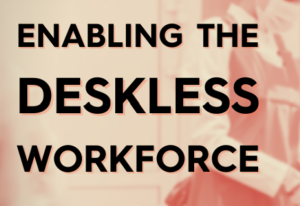 The Numbers
The Numbers
States reported that 216,000 workers filed for new unemployment benefits during the week ending Dec. 17, an increase of 2,000 from the previous week’s revised level. The number of workers continuing to claim unemployment benefits—1.67 million—has been steadily rising through the year and is now just under the pre-pandemic average of 1.7 million. The number of recurring applications for unemployment benefits is at its highest level since early this year, suggesting that laid-off workers may be having more trouble finding new jobs.
The number of recurring applications for unemployment benefits is at its highest level since early this year, suggesting that laid-off workers may be having more trouble finding new jobs. New weekly applications for unemployment benefits have remained low all year. So have layoffs, despite a series of recent downsizing announcements. But bad news could be ahead. Historical data shows December often ranks as the second-highest month for layoffs—after January.
88% of HR decision makers anticipate hiring in 2023 to be more difficult or as difficult as this year. 61% of HR decision makers indicate their top priority in 2023 is improving quality of candidates. Thanks, Jobvite: HR in 2023.
 Furlough, Layoff, Reduction in Force, Voluntary Resignation, Voluntary Severance, Termination, Separation…What Are The Differences?
Furlough, Layoff, Reduction in Force, Voluntary Resignation, Voluntary Severance, Termination, Separation…What Are The Differences?
As of early December, 2022, there were approximately 144,554 employees laid off by a variety of companies. Rumor has it that during COVID there was a glut of hiring and the recent layoffs were a result of things evening out. Whether that is true or not, the fact remains that it seems as if there are a lot of layoffs occurring.
What is a furlough- a furlough is a mandatory temporary leave of absence. Furloughs are generally a temporary restructuring of a company with a possible return to work date. Furloughed employees may apply for unemployment insurance benefits. They also still retain their insurance and other benefits.
What is a layoff- a layoff is a separation from employment due to lack of work for business reasons. Laid off employees should have a reasonable expectation to receive a call back to work when business picks up again. Laid off employees may apply for unemployment insurance benefits.
Layoffs quite often have a financial component with them and can have a severance package attached.
What is a reduction in force- A reduction in force (RIF) is the elimination of a position or positions that have no expectation to replace, resulting in a permanent cut in the headcount. Employers may reduce the size of the workforce either by terminating employees or through natural attrition. In some instances, a layoff may turn into a RIF when a decision is made not to recall any employees.
An RIF sometimes have a financial component with the attachment of a severance package.
What is a voluntary resignation- A voluntary resignation is when an employee decides to leave a company and provides a period of time in which to transition out. Usually a voluntary resignation is an employee’s choice and not a choice dictated by an employer.
There are instances in which a resignation is offered to an employee in lieu of a termination. Circumstances vary with this and are not standard.
What is a voluntary severance- Companies sometimes offer a “voluntary” severance to workers in anticipation of having to do a layoff or RIF in the future. A voluntary severance would allow employees to opt to take severance in lieu of waiting it out until the company determines whether or not they need to cull further. Generally, a voluntary severance is quite generous and a much nicer package than a formal lay off or position elimination.
What is a termination- The word termination, as it relates to employment simply means that an employee no longer works for that company. Terminations are further defined by a word or two in association with it, such as- termination for cause, termination for job abandonment, termination from resignation, etc.
What is a separation- A separation of employment essentially refers to the fact that an employee no longer works for the company. There is always a separation date and a cause of separation. Termination of employment and separation of employment are synonymous. We feel that using the word separation when referring to anyone leaving the company is a kinder way to frame it.
If you’re in a situation in which your company needs to make some tough decisions about staffing levels, TogetHR Consulting is here to help.
 Do You Have Deskless Workers?
Do You Have Deskless Workers?
At a time of massive labor shortages in industries that rely on factory workers, nurses, cashiers, restaurant servers, teachers, call-center operators, truck drivers, and other “deskless workers,” more than four in ten of these job holders are at risk of quitting—and pay isn’t the reason why. With more than 40% of deskless workers looking for work somewhere else, what can you do to retain those that you have?
Approximately 70% to 80% of the world’s labor force is made up of “deskless” workers: employees whose jobs are tied to a location or can’t be done remotely. Industries such as health care, manufacturing, logistics, food production, hospitality, and retail rely heavily on deskless workers. With record sales forecast for holiday shopping this year, seasonal deskless workers such as cashiers and truck drivers will be vital to fill the surge of consumer demand. While many employers are still finding it difficult to fill vacant positions, 53% of deskless workers feel burned out at work, and more than four out of ten are at risk of quitting, according to a new study published in early December by Boston Consulting Group (BCG).
The research, titled “Making Work Work Better for Deskless Workers,” features findings from a survey of 4,668 deskless workers in France, Germany, the US, and the UK. Respondents were almost evenly split between men and women, and included a range of ages, levels of seniority, job experience, and employment status.
Risk of Quitting Varies by Geography and Industry
The portion of deskless workers at risk of quitting differs depending on geography and field. The UK has the largest portion of people in deskless jobs open to a new opportunity (49%) followed by Germany (44%), the US (43%), and France (37%).
Almost half of deskless workers in the retail industry (48%) are at risk of quitting, with 41% of employees passively looking and 7% actively looking. Other industries at high risk include transportation and warehousing, industrial goods, health care, and education.
Meeting Emotional Needs is Key to Keeping Employees Onboard
While deskless workers cite pay and compensation as an important aspect of their jobs, eight of the top ten factors that motivate deskless workers to quit are emotional rather than functional, including feeling fairly treated and respected, feeling valued and appreciated, having work that’s enjoyable, and maintaining a good relationship with a manager or boss.
52% of those whose tenure is less than 12 months are either actively or passively job hunting. This means that delivering emotional connections during recruitment and onboarding, as well as sustaining them for the long term, is critical.
Gen Z Workers: Burned Out and Actively Job-Searching
According to the survey, younger employees are more likely to be looking for a job change. Nearly two-thirds (63%) of deskless workers aged 18 to 24 describe feeling burned out from work, and 55% are either actively looking for a new job or would consider switching if the right opportunity came along. By comparison, only 30% of deskless workers 55 and older, and just 38% aged 45 to 54, say they are job hunting.
How Employers Can Retain Their Deskless Workers
The survey offers three key areas of focus for employers to ensure their deskless workers are not lured away:
- Find Out What Workers Want: Using surveys, focus groups, and one-on-one conversations, find out what deskless workers want in a job.
- Build Great Managers: BCG’s research shows that deskless workers dissatisfied with their managers feel more burned out, are less likely to recommend their employer, and are twice as likely to leave. Organizations must build their managers’ capabilities to deliver a positive work experience for deskless workers.
- Invest in Making Work Better: After identifying changes to improve work for deskless workers, companies must invest in the technology, upskilling opportunities, governance approaches, etc., to support the new practices; then make necessary adjustments before rolling out and scaling.
Research done by Boston Consulting Group, article can be read here: Deskless Workers or download the publication here.
 Employment Buzzwords from 2022
Employment Buzzwords from 2022
It’s that time of year, again, and here they are:
- Quietly Quitting- In short, quiet quitting has been popularized recently with employees that are just at a job for the paycheck and aren’t really emotionally or intellectually engaged. It’s about doing the bare minimum, and not going “above and beyond”.
- Career Cushioning- When times get tough, some professionals are turning to ‘career cushioning’ — bolstering yourself with new skills and contacts to make a potential job loss easier.
- Productivity Paranoia- Essentially, productivity paranoia refers to a manager or any senior leader’s uncertainty that their people are working as effectively as they should – because they can’t physically see them. For instance, leaders no longer have the typical visual cues that help them understand that their employees are working.
- Great Resignation- The Great Resignation, also known as the Big Quit and the Great Reshuffle, is an ongoing economic trend in which employees have voluntarily resigned from their jobs en masse, beginning in early 2021 in the wake of the COVID-19 pandemic. Among the most cited reasons for resigning include wage stagnation amid rising cost of living, limited opportunities for career advancement, hostile work environments, lack of benefits, inflexible remote-work policies, and long-lasting job dissatisfaction. Most likely to quit have been workers in hospitality, healthcare, and education.
- Ghosting- Candidates or employees avoid having potentially unpleasant conversations with recruiters or their employers by going radio silent instead.
- Quick Quitting- Workers leaving a new job after a relatively short period of time.
- Nobody Wants to Work Anymore- whether you’ve seen it on signs or you’ve seen the memes or the songs, this phrase has become the rallying cry for establishments that are short staffed.
- And those pesky HR acronyms: RTO (return to office), WFH (work from home) and more.
There are probably many more, if you know of some, please share. In the meantime, we’ll see what 2023 brings.
 What 2023 Will Bring on the Employment Front
What 2023 Will Bring on the Employment Front
We spoke to a variety of HR and business related experts and here’s what they said:
- 2023 will bring Upskilling to workers- employers may offer extra compensation to those employees that increase their workload by taking on additional duties.
- Benefits will become a large part of the bargaining tool with recruiting. Companies should ensure they offer the basics as well as those a little outside the box.
- Pay Transparency– both New York and California have passed pay transparency laws and more are on the way. If you don’t post your wages in your ads, you may consider doing so to get ahead of this.
- Mental Health and Wellness are huge perks for retention and recruiting. Wellness plans, mental health days, healthy living benefits, whatever it happens to be, Employers offering these will be sought after. Stress and burnout are real. Depending on the industry, it is more serious and severe than others.
- Employee Productivity– employers are looking for ways to measure employee productivity. A lot of this is due to working remotely or a hybrid work design, others are looking how to save money. There are apps, websites and companies that are solely dedicated to this.
- Remote and Hybrid Work– have you looked at the help wanted ads lately? If you can do a tiny bit of hybrid, it will place your company above others.
- Soft Skills are just as important as Hard Skills- companies are finding out that culture is a huge driver for recruiting and retention. Making sure your employees are a “fit” to the culture from the beginning is setting up the company for success.
- Purpose and Mission are important to job seekers and workers. Nonprofits have this covered and usually hire for the mission. Private, for profit companies can also have a mission and purpose. Do you have a charitable organization that you contribute to? Do you help with food drives, emergency situations? Employees are looking toward companies that share in a purpose and mission.
- Remember to work Smarter not Harder- there are some great tools available for whatever it is you’re trying to do. Talk to your peers, see what they use, give yourself back some time.